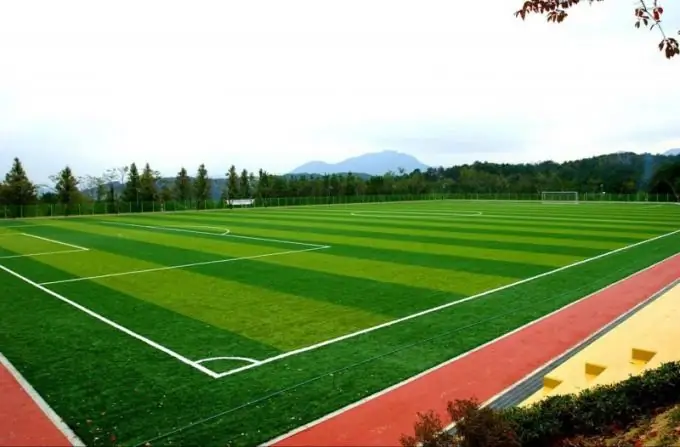In the past couple of decades, artificial turf has been increasingly used in the construction of football pitches. Artificial turf is a roll carpet that is resistant to low temperatures and ultraviolet radiation.

Benefits of Artificial Turf
Modern technologies allow artificial turf to have a number of advantages over conventional grass.
Artificial turf allows you to use it 24 hours a day, while it is not recommended to use a turf for more than 2-3 hours a day.
The service life of an artificial turf is several tens of years, while an ordinary turf needs to be sown several times a year, and if not properly used, it should be completely replanted.
Unlike a grass lawn, an artificial lawn does not require daily maintenance - it does not need to be mowed, watered or fertilized.
Thanks to the additional components that are used when backfilling the artificial turf, it is possible to reduce the likelihood of injury to players on the field and to regulate the rebound of the ball.
With all of these benefits in mind, FIFA has approved football matches on artificial turf fields since 2001 under its auspices.
Artificial turf production
For the production of artificial turf, a method called trafing is used. It is based on the application of a pile layer that imitates the grass cover on a mesh elastic base.
For the manufacture of pile, polyethylene, polyamide, polypropylene granules or their combinations are used. They melt, after which a heat stabilizer is added to them, which protects the pile from temperature extremes.
The resulting liquid mass is then passed through a perforated honeycomb-like plate. Thus, small fibers are obtained that resemble grass.
To make the carpet durable and resistant to mechanical resistance, the pile material is fixed to the plate using binders, which are fixed on the back side with latex material.
Then the latex is dried at 90 degrees until it hardens. This is the final stage of manufacturing.
The height of the tufted blades of grass varies from a few millimeters to 6-7 centimeters. Colors can be very different, in most cases they use the entire gamut of green, and white pile is used for markings.






